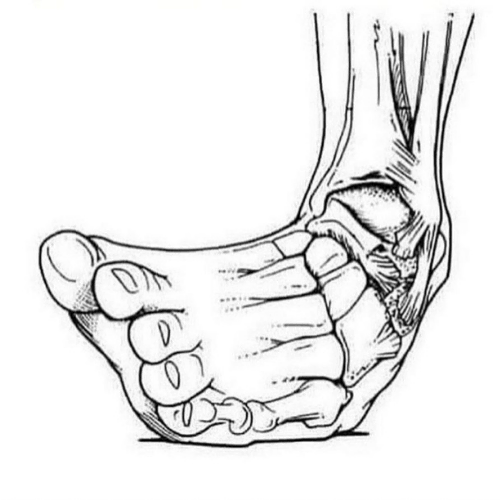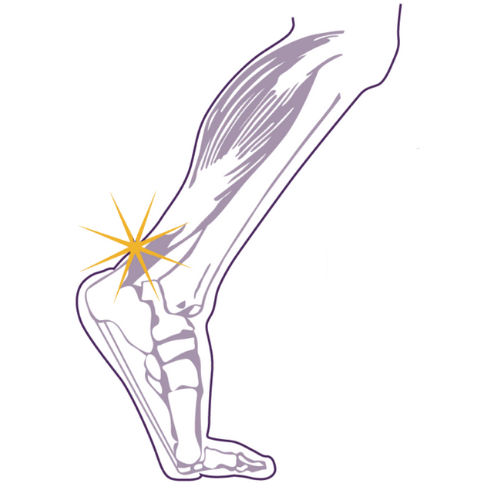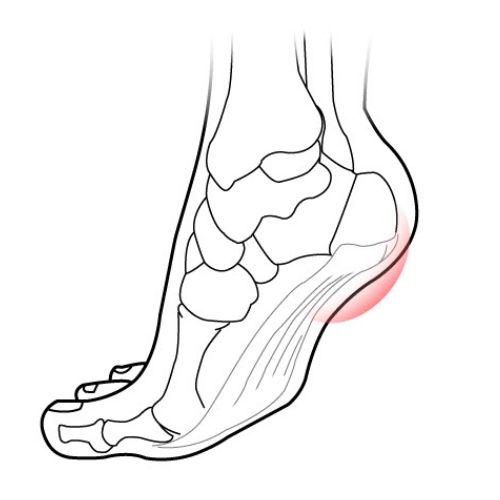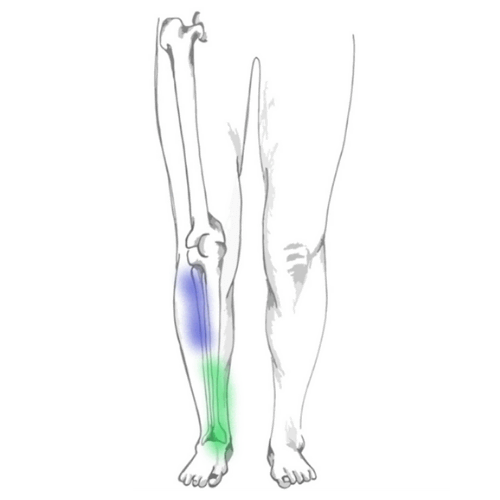
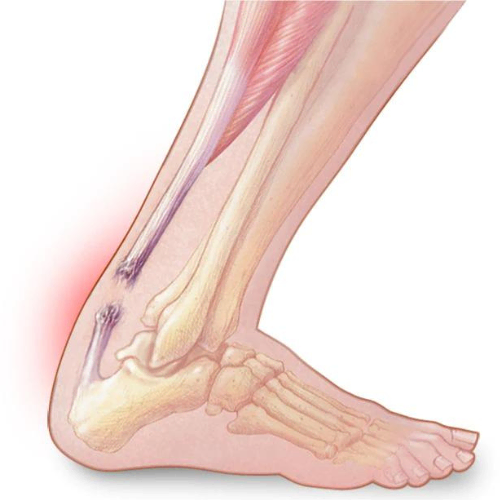
The Achilles tendon is the largest and strongest tendon in the human body. It attaches the calf muscles (gastrocnemius and soleus) to the heel of the foot. The Achilles tendon receives blood supply from two separate arteries. In comparison, the midportion of the tendon receives relatively little blood supply, leaving it vulnerable to degeneration and rupture.1
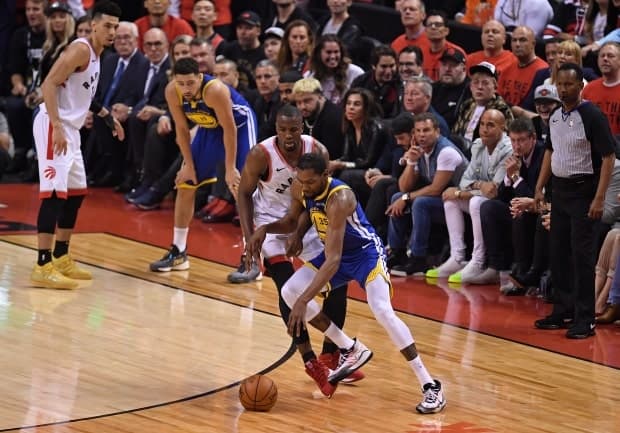
Achilles tendon ruptures, particularly at the midportion, are a common injury in sports, occurring in 0.18% of the general population and as high as 6-18% in athletic populations. Unfortunately, many people who experience this injury have ongoing deficits in their function and quality of life.
It is usually straightforward to diagnose a tear in the clinic. This is done with the Thompson test. To do this test, we squeeze your calf muscles while looking for movement in your foot. A lack of foot movement indicates a high likelihood of a complete or partial Achilles tendon tear. An ultrasound or MRI can also be used to confirm this diagnosis.
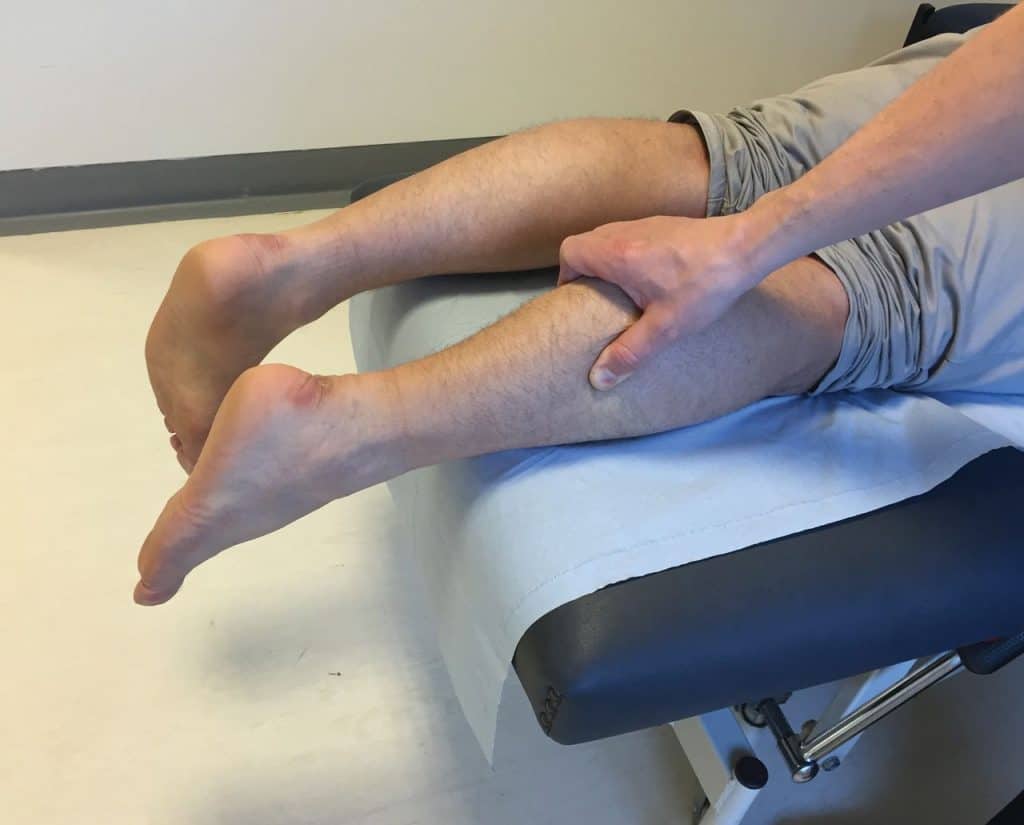
Men are 10 times more likely to suffer a torn Achilles compared to women. Age is also a risk factor, with older male athletes having the highest incidence of an Achilles rupture. Individuals between 25-40 years old and those over 60 years of age had the highest risk of a tear.1
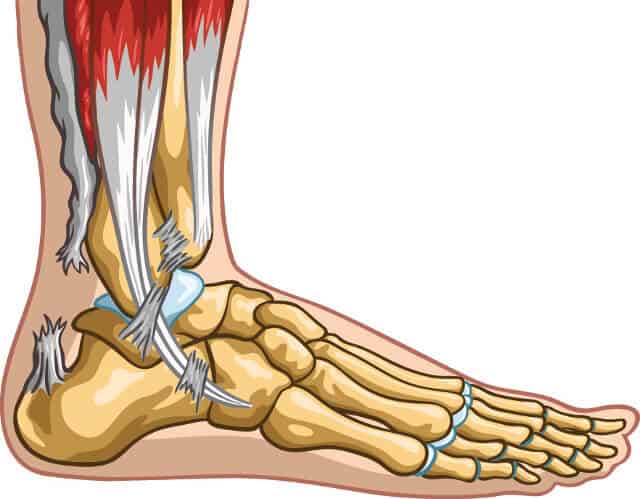
A healthy tendon does not rupture with everyday activities or sports. If you have had Achilles tendinopathy (also known as Achilles tendinitis) in the past, you are at a higher risk for rupture. Degenerative changes are regularly found in ruptured tendons.2
Due to the limited understanding of the risk factors, it is extremely difficult to predict who will rupture their Achilles tendon.
An Achilles tendon tear can be managed conservatively or with surgical treatment. The main concern with this decision involves reducing the risk of re-rupture. Although not a common occurrence, an Achilles tendon re-rupture can have devastating consequences to an individual’s mental and physical wellbeing.
In the past, most Achilles ruptures were managed surgically. Recent research has now shown that conservative care with an accelerated rehabilitation program has comparable outcomes. However, the main concern with a non-surgical approach is the risk of delayed healing and re-rupture.
A randomized control trial evaluated outcomes for surgical tendon repair compared to non-surgical management with the addition of an accelerated rehabilitation program for individuals immediately after an Achilles tendon tear.3
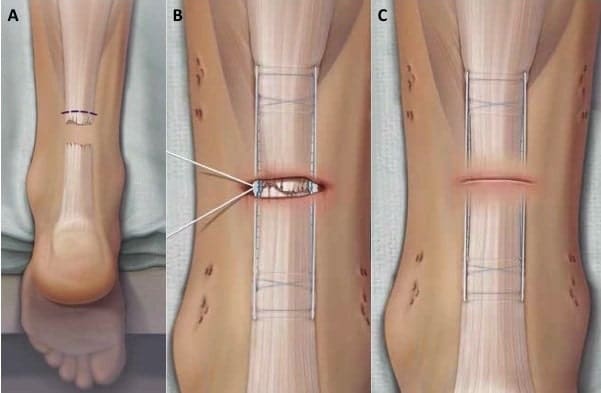
The surgical group was given the standard surgical protocol, including immobilization in a pneumatic walking brace for 6 weeks, in a slightly plantarflexed (pointed) foot position to take pressure off of the surgical site. They were encouraged to put as much weight as they could tolerate after the first postoperative day and began active physiotherapy by week two.
The non-surgical treatment group was also immediately placed in a pneumatic walking boot and encouraged to fully weight bear. After 8 weeks of immobilization in the boot, they began the same active rehabilitation as the surgical group.
At 3, 6, and 12-month follow-ups, the researchers found no significant difference in the outcomes or functional ability between the two groups. However, it’s important to note that your circumstances, preferences, and goals are the most important criteria when deciding between surgical and non-surgical treatment. For example, many athletes decide to have a surgical repair if they plan on returning to sports that involve lots of running and jumping. There are also risks associated with surgery that need to be considered, especially if you are in a higher-risk group such as diabetics and those with a greater body mass index (BMI).
Regardless of the initial management decision, the rehabilitation process takes upwards of 9-12 months to fully recover.
A structured rehabilitation program is essential for a successful recovery. In our experience, most patients have difficulty regaining their full strength after a rupture and struggle with the fear of re-injury. One study showed that Achilles tendon rupture patients did not regain their full calf strength even 11 years after injury.4 The authors advise that rehab should be aggressive in the first year after injury, especially within the first 6 months.
Ideally, we would test a patient’s calf strength and power using our force dynamometer before injury (such as with our baseline movement analysis session). Since this is not always feasible, we will test the non-injured side as soon as possible to get an objective strength measurement, which can be used as a target for the injured side.
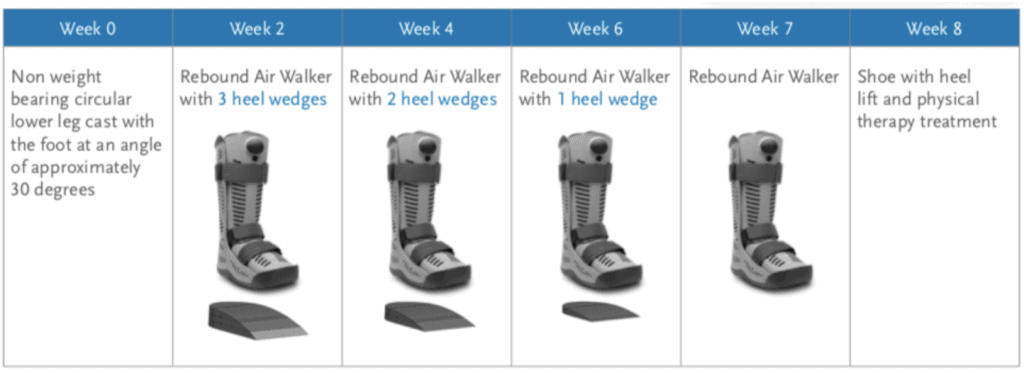
Your foot and ankle may be immobilized or in a brace for up to 8 weeks, whether you have had surgery or not. The amount of ankle dorsiflexion (where the foot is lifted) is limited in the initial stages to reduce stress on the healing tendon. You will also use heel lifts in the first few months to reduce the stress placed on the healing tendon and to reduce the risk of tendon elongation. Tendon elongation can lead to permanent functional deficits, such as the inability to perform a full range of motion heel raise.
Early functional rehabilitation is the most important factor for tendon healing. For more information about the structure and function of tendons, and how they respond to load, check out our tendon pain blog post.
At Kinetic Labs, we combine a milestone and time-based approach to rehabilitation. The speed of progress through each stage of rehab will depend on the individual. Here is the typical recovery timeline for most people:
At each stage, we have specific criteria to accomplish before moving to the next stage. For example, the criteria before returning to running is a calf strength deficit of under 25% compared to the normal side, the ability to perform repetitive single-leg heel raises and toe walking, and a minimum of 12 weeks post-injury.
We use other treatment techniques to improve recovery, such as blood flow restriction training (BFR). BFR has been shown to improve strength, endurance, and function after Achilles tendon rupture.5
A recent study examined 62 professional male athletes across the NBA, NFL, and MLB who had undergone Achilles tendon surgery. Unfortunately, this was a career-ending injury for 3 out of every 10 players (31%).6 Of the remaining players that did return to professional sports, they played fewer games and performed worse in their first year back, but not at 2 years post-operatively.
Although it is not guaranteed that you will be able to return to sports, many people recover well after intense rehabilitation. At Kinetic Labs, we put our patients through a comprehensive return to sport test battery that includes muscle strength testing, movement analysis and functional tests. This provides clarity on what needs to improve before safely returning to full activities.
There is a lack of research in this area, however, one study did examine the re-tear risk of 210 patients after rupture. They found that ~7% of people in the study had re-ruptured their Achilles tendon.7 The only significant risk factors for a re-tear were a failed non-operative treatment and male gender. No females in their study re-ruptured their tendons.
For individuals who did not undergo surgery, they were at the highest risk for retearing immediately after coming out of the walking boot. In fact, 73% of the re-ruptures occurred within the first month after removing the walking brace. It is important to be cautious in the initial stages of your recovery. Typically, most re-ruptures will occur within the first 9 weeks, although it can happen at any point if the forces placed on the tendon exceed the tendon’s capacity. Surprisingly, Achilles tendon re-ruptures occurred more frequently with low-load activities such as walking, likely because they tend to happen in the early stages of recovery.
We advise coming in as soon as possible after your injury, regardless of your management plan. The first appointment is important to go through treatment goals, recovery expectations, and initial exercises to prevent muscle loss. Typically, intensive rehabilitation will start as you wean off the walking boot.
If you’re looking for guidance to recover from an Achilles tendon rupture, contact us today to set up an appointment.

